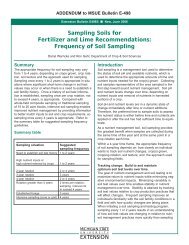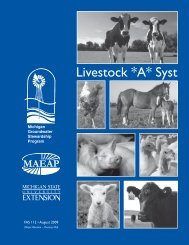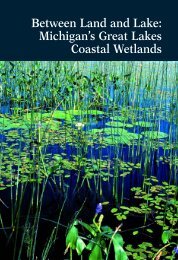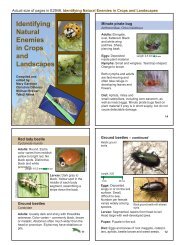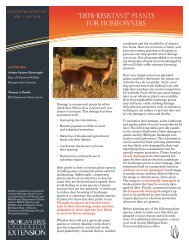Michigan Forest Communities - Michigan Association of ...
Michigan Forest Communities - Michigan Association of ...
Michigan Forest Communities - Michigan Association of ...
You also want an ePaper? Increase the reach of your titles
YUMPU automatically turns print PDFs into web optimized ePapers that Google loves.
Northern Dry-Mesic Pine <strong>Forest</strong>s<br />
Signature trees<br />
The same species that occur in<br />
Type 10 also constitute this type, but<br />
now two pines dominate in variable<br />
mixtures:<br />
• Red (Norway) pine<br />
• White pine<br />
Red pine is more common on dry<br />
sandy soils, whereas white pine will<br />
predominate on more mesic habitats.<br />
Other trees<br />
Numerous hardwood and conifer<br />
trees can be associated with the big<br />
pines:<br />
Bracken fern.<br />
Striped maple.<br />
• White oak (rare in Region III and<br />
absent in Region IV)<br />
• Black oak (region I and the southwestern<br />
part <strong>of</strong> Region II only)<br />
• Northern pin oak (localized in<br />
regions III and IV)<br />
• Red oak<br />
• Red maple<br />
• Black cherry<br />
• Bigtooth aspen<br />
• Quaking aspen<br />
• Paper birch<br />
• Jack pine<br />
• Hemlock<br />
• Balsam fir (usually subcanopy,<br />
near wetlands)<br />
• White spruce (usually subcanopy<br />
in regions III and IV)<br />
85



